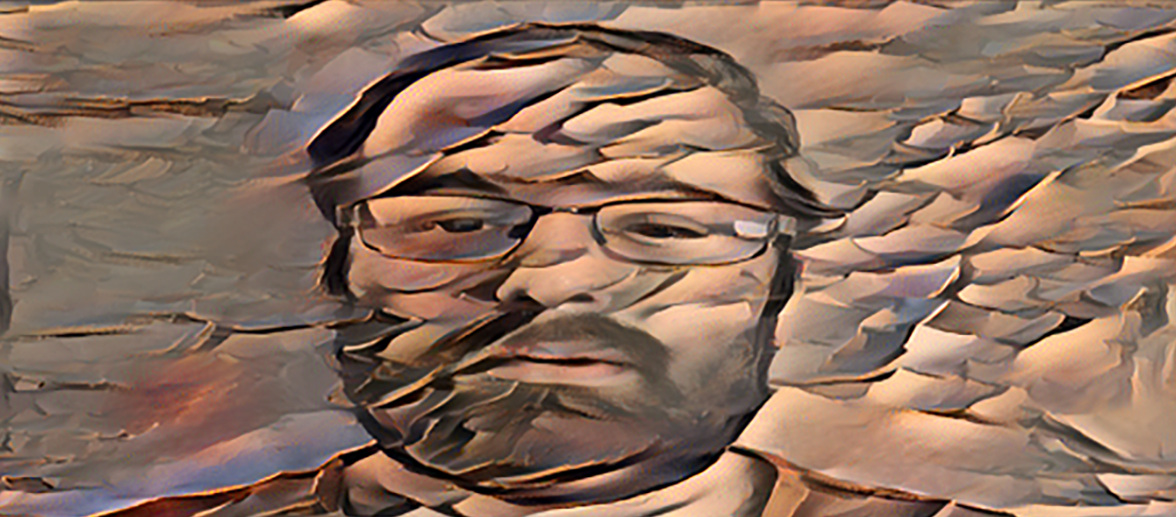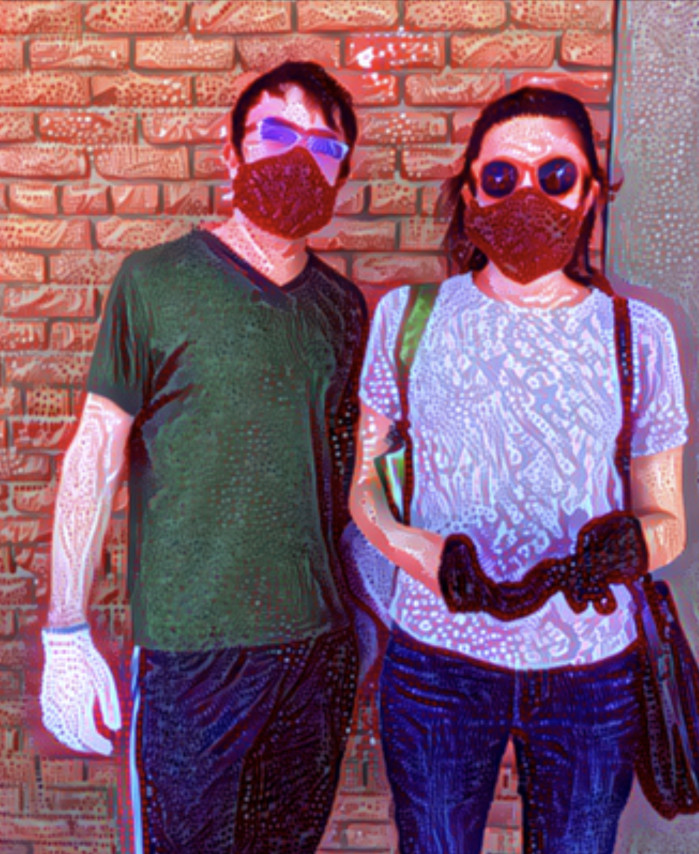Recent News
UNM Engineering team wins ASEE best paper for work on first-year engineering course
July 17, 2025
New director will enhance interdisciplinary engineering learning opportunities
July 2, 2025
Final SIRI cohort visits UNM campus
June 30, 2025
Perfetti receives ANS Landis Engineering Achievement Award
June 26, 2025
News Archives
Art imitates life during COVID-19 in machine learning course
May 26, 2020 - by Kim Delker

“Isolation” by Mohammad R. Yousefi
Students who enrolled in Computer Science 429/529 (Introduction to Machine Learning) this semester were probably expecting to focus on Bayesian analysis, logistic and linear regression and empirical methodology, with a good bit of statistics and linear algebra thrown in.
But this semester was a game-changer. COVID-19 hit right in the middle of the semester, which created a lot of extra stress and sense of unknown for students, and for everyone, as lives were turned upside down and in-person classes were converted into virtual and solitary experiences.
However, class still had to go on. Knowing how difficult life had become for many students, the professor, Trilce Estrada, associate professor of computer science, suggested a different kind of assignment that still met learning objectives but that allowed students a way to express what was going on around them. Students were encouraged to create artwork that focused on life during the coronavirus pandemic.
The result was a series of artwork created by students that uses machine learning techniques, allowing students to express their thoughts, feelings and observations, combining both science and art. The artwork and a description of each creation is displayed on a website.

“Each piece of artwork was created or enhanced through machine learning techniques and represents something very personal to its creator, from hope to despair, humor or melancholy,” Estrada said. “They are a reflection of our times.”
The artwork includes images that are iconic, such as “Individual Project” by Farhang Rouhi, which shows plants growing from the Statue of Liberty, representing the many impacts of coronavirus, including nature taking back control from humans.
For instance, in “Isolation” by Mohammad R. Yousefi, he took at image of himself and modified it using style transfer techniques to create a “cracks in dry land” feature to represent his feelings of social distancing and depression “that feels like life is slowly being drained from me much like the dry desert imagery I used as the style of an image of myself.”
In “Covid Colored Glasses,” Carolyn Atterbury used style transfer methods to modify an image of herself and her sister, both wearing masks, waiting in line to enter a grocery store. The style image used was called “Shedding Tears to the Season” by Yayoi Kusama. The resulting compiled image “illustrates the distorting effect that the extended quarantine has on reality, while we struggle to maintain important rituals and ultimately keep on keeping on.”
The political times were touched upon as well, with “Corona Trump,” which took a psychedelic image that looks like bacteria or hallucinations, depending on the interpretation, and transferred it onto an image of President Trump.
Computational resources to create the projects were provided by the Department of Computer Science and the UNM Center for Advanced Research Computing.
